Looking for inspo? This garden on Sydney’s northern beaches is the place to find it
Go inside this award-winning secluded and lush garden hidden on Sydney’s northern beaches. It’s a triumph in outdoor living. Even the local bandicoots approve.
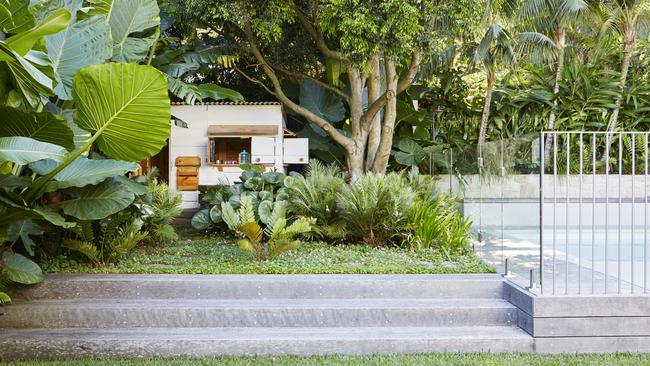
Nestled close to Little Manly beach, in a rarefied pocket of Sydney’s northern beaches, this new build represents an ideal collaboration between client, architect, builder and landscaper. Although it took three years from concept design to completion, the result is the forever home the client wished for, while the project made the finals of the 2023 Houses Awards landscape category.
Architects CHROFI designed a series of loosely connected living and work spaces and an outdoor living room, inspired by the client’s attraction to mid-century architecture. The home, built by Greybuilt, sits within a secluded and lush garden, designed, constructed – and still maintained – by Outdoor Establishments, led by director Trystan Graham.
“The clients were very involved because they loved the design process, but they trusted us and gave us free rein,” says Graham. “It was a great relationship.” There were numerous challenges in the 700sq m, sloping site, such as the topography and existing stormwater and sewer infrastructure that meant utmost care had to be given to designing the swimming pool and other landscape elements.
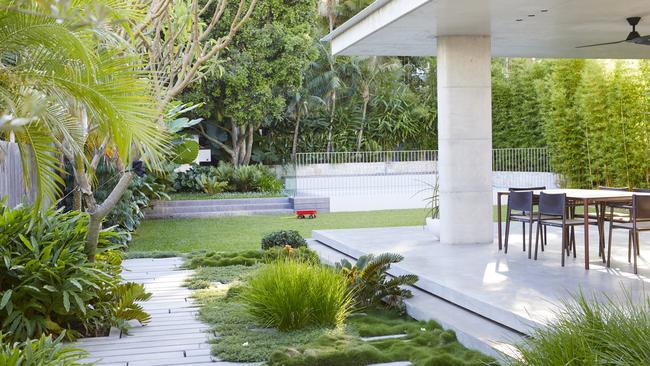
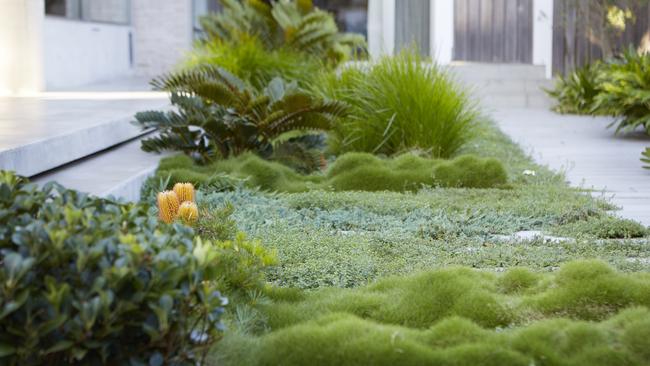
“The overland water flows off the hillside above added complexity, but this constraint was flipped and became an exciting opportunity,” Graham explains. “The garden to the side of the entertaining area with the concrete plank pathway is suspended 2m above the ground below, so the plantings you see are contained in concrete planters sitting on a steel frame. You can literally walk below that garden. The concrete planters and advanced palms and frangipani were then craned into position.”
Interspersed with the concrete planks are low ground covers such as no-mow grass (Zoysia tenuifolia), thyme and blue juniper (Juniperus ‘Blue Rug’), enlivened with textural cardboard palm (Zamia furfuracea), dwarf Banksia ‘Birthday Candles’ and tufts of Lomandra ‘Tanika’.
“The rooftop garden was another challenge,” says Graham. “The southerly winds howl in across Little Manly beach and the gardens bake in the afternoon sun. We took the ‘set and forget’ approach, picking species that we knew were tough and could be left to their own devices.”
These include century plant (Agave attenuata), sago palm (Cycas revoluta), Crassula ‘Gollum’ and Crassula ‘Bluebird’. At the rear of the property, established trees including a riberry (Syzygium leuhmannii) were protected during the build as they provided much-needed scale and privacy.
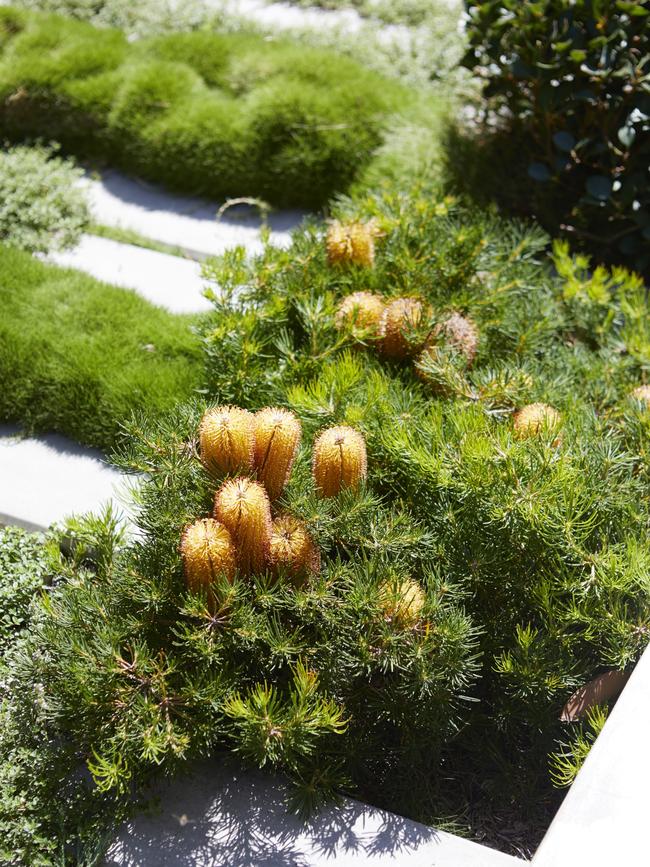
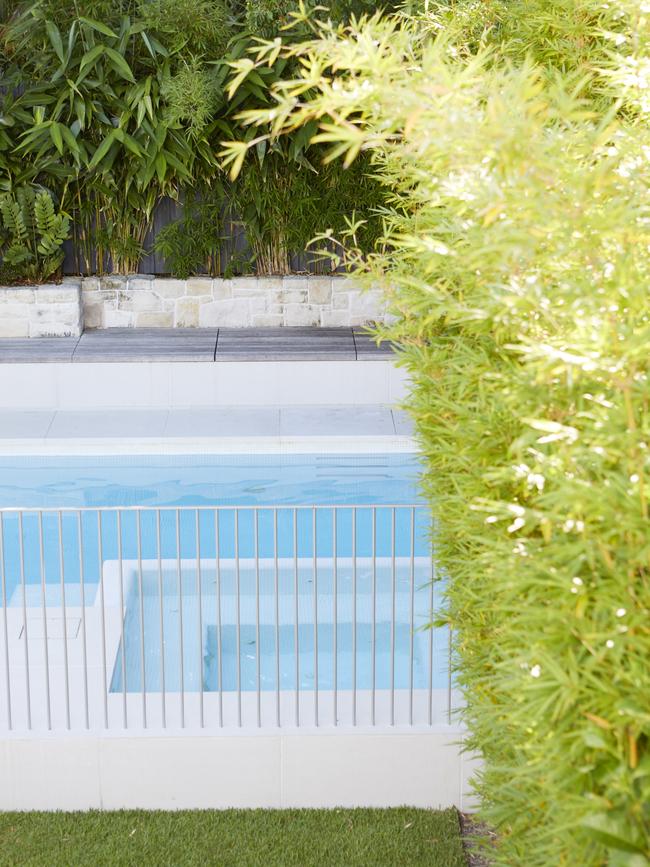
To these were added a selection of lush, subtropical species such as Kentia palm (Howea forsteriana), shell ginger (Alpinia zerumbet), heliconia (H. ‘Hot Rio Nights’), elephants’ ears (Alocasia macrorrhiza), silver lady fern (Blechnum ‘Silver Lady’), tractor seat plant (Ligularia reniformis) and slender weavers bamboo (Bambusa textilis ‘Gracilis’).
“The feeling the gardens provide is incredibly calming,” says Graham.
“Plants are the unifying factor that makes a house into a home.”
The final tick of approval comes from the family of long-nosed bandicoots that lived here before the build. “Our maintenance team find signs of the little buggers foraging through the new gardens,” laughs Graham. “That’s another factor I consider to be a great success.”
Q&A
I moved my fly trap from near the house to the vegie garden. It has worked well – but am I reducing pollination of some vegetables?
Chris Hogan, by email
Many native and exotic fly species are good pollinators because they frequently visit flowers for nectar and/or pollen, where their hairy bodies pick up and spread pollen. A recent study found flies are the most important pollinators after bees, visiting nearly three-quarters of the world’s 105 most widely planted food crops. Studies here are investigating flies as pollinators of commercial avocado, mango, lychee, strawberry, blueberry, carrot seed and brassica seed crops.
My kangaroo paws, in sandy soil, thrived for six months then died suddenly for no apparent reason. Can I resurrect them?
Georgie Sweeting, Perth
Sudden death is often due to root rot; overwatering, poor drainage or the crown of the plant being buried by soil or mulch are all contributors. Kangaroo paws are very susceptible. You probably need to start again.
The past two years, the new leaves on my two ornamental mulberry trees sprouted healthy, then went curly, stunted and puckered. We sprayed for leaf curl but it didn’t help.
Sue Williams, by email
Your photo shows this is probably damage from a heavy infestation of aphids. They love tender new growth; as they suck sap they damage the young leaf cells, which then distort as they expand. You’ll need to spray for aphids (horticultural soap, Eco-neem or pyrethrum) at bud burst and again a week or two later. Leaf curl is a fungus, so a fungicide for that would not treat pests.
Send your questions to helenyoungtwig@gmail.com. The best question for December/January wins Paul Bangay’s latest book A Life in Garden Design (Thames and Hudson) worth $80. November’s winner is Carolien Giele for her question about using seaweed to improve sandy soil.
More Coverage
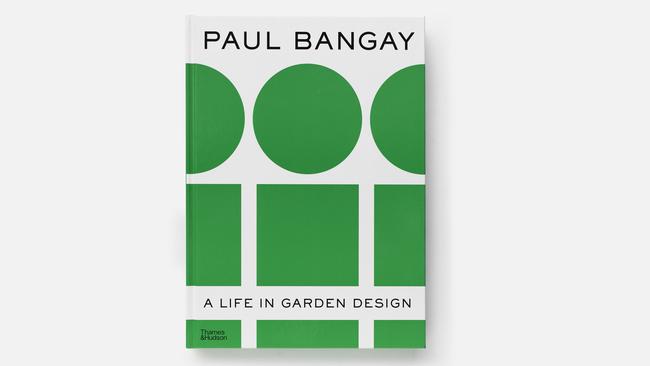






To join the conversation, please log in. Don't have an account? Register
Join the conversation, you are commenting as Logout